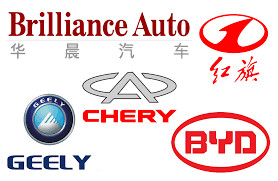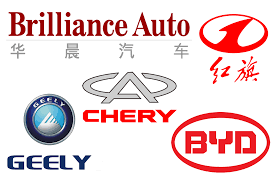
Slightly relaxing an earlier plan to launch the rules from next year that had left global automakers worried about being able to comply, China has set a deadline of 2019 to impose tough new sales targets for electric plug-in and hybrids vehicles.
China’s industry ministry said in a statement that credits for so-called new-energy vehicles (NEVs) equivalent to 10 percent of annual sales by 2019 would have to be amassed by car makers. For 2020, that level would rise to 12 percent.
But the proportion by NEVs by volume would likely be lower because a single vehicle can generate multiple credits.
An extra year grace period has been given to car makers by the removal of an explicit 8 percent quota for 2018 in the targets, announced by the Ministry of Industry and Information Technology (MIIT), even though they closely mirror previously announced plans.
With a long-term aim to ban the production and sale of cars that use traditional fuels announced earlier this month. the quotas are a key part of a drive by China, the world’s largest auto market, to develop its own NEV market.
A softening of the proposals for all-electric battery vehicles and electric plug-in hybrids has however been urged for by global automotive manufacturers
Credits for new-energy vehicles including plug-in hybrids and fully electric cars that can be transferred or traded will be received by car makers under the rules. The targets would be needed to be complied by firms with annual sales volumes above 30,000 units.
In a system which would likely mean the actual proportion NEVs made up of total sales was lower, calculation of whether firms have met their quota will be based on these credits - which will vary depending on the range and performance of the vehicle.
“The rules could result in the production of more than one million EVs annually in China by 2020, or about 4 percent of sales,” Simon Mui, a transport and energy exert at the U.S.-based Natural Resources Defense Council wrote in note.
Carmakers were in general positive about the move.
“We welcome the Chinese auto industry’s shift towards greater adoption of NEVs and will comply with relevant regulations presented by authorities,” Ford Motor Co said in a statement responding to the announcement.
General Motors Co said it would “strive to comply with the NEV mandatory requirements”, though it added “continued joint efforts by the government and companies are essential to build broad-based consumer acceptance for NEVs”.
“GM has sufficient capacity to manufacture NEVs in China,” it said in a statement.
Japan’s Honda Motor Co Ltd would “try to expand our lineup of new energy vehicles” to meet the quotas and said it planned to launch an electric battery car in China next year.
Closing of a competitive gap between its newer domestic automakers and global rivals and combatting air pollution are the aims of China. In order to make up at least a fifth of Chinese auto sales by 2025, it wants to set goals for electric and plug-in hybrid cars.
(Source:www.reuters.com)
China’s industry ministry said in a statement that credits for so-called new-energy vehicles (NEVs) equivalent to 10 percent of annual sales by 2019 would have to be amassed by car makers. For 2020, that level would rise to 12 percent.
But the proportion by NEVs by volume would likely be lower because a single vehicle can generate multiple credits.
An extra year grace period has been given to car makers by the removal of an explicit 8 percent quota for 2018 in the targets, announced by the Ministry of Industry and Information Technology (MIIT), even though they closely mirror previously announced plans.
With a long-term aim to ban the production and sale of cars that use traditional fuels announced earlier this month. the quotas are a key part of a drive by China, the world’s largest auto market, to develop its own NEV market.
A softening of the proposals for all-electric battery vehicles and electric plug-in hybrids has however been urged for by global automotive manufacturers
Credits for new-energy vehicles including plug-in hybrids and fully electric cars that can be transferred or traded will be received by car makers under the rules. The targets would be needed to be complied by firms with annual sales volumes above 30,000 units.
In a system which would likely mean the actual proportion NEVs made up of total sales was lower, calculation of whether firms have met their quota will be based on these credits - which will vary depending on the range and performance of the vehicle.
“The rules could result in the production of more than one million EVs annually in China by 2020, or about 4 percent of sales,” Simon Mui, a transport and energy exert at the U.S.-based Natural Resources Defense Council wrote in note.
Carmakers were in general positive about the move.
“We welcome the Chinese auto industry’s shift towards greater adoption of NEVs and will comply with relevant regulations presented by authorities,” Ford Motor Co said in a statement responding to the announcement.
General Motors Co said it would “strive to comply with the NEV mandatory requirements”, though it added “continued joint efforts by the government and companies are essential to build broad-based consumer acceptance for NEVs”.
“GM has sufficient capacity to manufacture NEVs in China,” it said in a statement.
Japan’s Honda Motor Co Ltd would “try to expand our lineup of new energy vehicles” to meet the quotas and said it planned to launch an electric battery car in China next year.
Closing of a competitive gap between its newer domestic automakers and global rivals and combatting air pollution are the aims of China. In order to make up at least a fifth of Chinese auto sales by 2025, it wants to set goals for electric and plug-in hybrid cars.
(Source:www.reuters.com)





